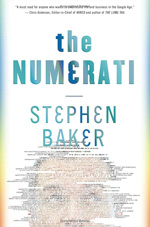Mediocre metrics, and how did we get here?
In other news, an article from Slate about measuring obesity using BMI (Body Mass Index). Interesting reading as I continue with work in the health care space. The article goes through the obvious flaws of the BMI measure, along with some history. Jeremy Singer-Vine writes:
Belgian polymath Adolphe Quetelet devised the equation in 1832 in his quest to define the “normal man” in terms of everything from his average arm strength to the age at which he marries. This project had nothing to do with obesity-related diseases, nor even with obesity itself. Rather, Quetelet used the equation to describe the standard proportions of the human build—the ratio of weight to height in the average adult. Using data collected from several hundred countrymen, he found that weight varied not in direct proportion to height (such that, say, people 10 percent taller than average were 10 percent heavier, too) but in proportion to the square of height. (People 10 percent taller than average tended to be about 21 percent heavier.)
For some reason, this brings to mind a guy in a top hat guessing peoples’ weight at the county fair. More to the point is the “how did we get here?” part of the story. Starting with a mediocre measure, it evolved into something for which it was never intended, simply because it worked for a large number of individuals:
The new measure caught on among researchers who had previously relied on slower and more expensive measures of body fat or on the broad categories (underweight, ideal weight, and overweight) identified by the insurance companies. The cheap and easy BMI test allowed them to plan and execute ambitious new studies involving hundreds of thousands of participants and to go back through troves of historical height and weight data and estimate levels of obesity in previous decades.
Gradually, though, the popularity of BMI spread from epidemiologists who used it for studies of population health to doctors who wanted a quick way to measure body fat in individual patients. By 1985, the NIH started defining obesity according to body mass index, on the theory that official cutoffs could be used by doctors to warn patients who were at especially high risk for obesity-related illness. At first, the thresholds were established at the 85th percentile of BMI for each sex: 27.8 for men and 27.3 for women. (Those numbers now represent something more like the 50th percentile for Americans.) Then, in 1998, the NIH changed the rules: They consolidated the threshold for men and women, even though the relationship between BMI and body fat is different for each sex, and added another category, “overweight.” The new cutoffs—25 for overweight, 30 for obesity—were nice, round numbers that could be easily remembered by doctors and patients.
I hadn’t realized that it was only 1985 that this came into common use. And I thought the new cutoffs had more to do with the stricter definition from the WHO, rather than the simplicity of rounding. But back to the story:
Keys had never intended for the BMI to be used in this way. His original paper warned against using the body mass index for individual diagnoses, since the equation ignores variables like a patient’s gender or age, which affect how BMI relates to health.
After taking as fact that it was a poor indicator, all this grousing about the inaccuracy of BMI now has me wondering how often it’s actually out of whack. For instance, it does poorly for muscular athletes, but what percentage of the population is that? 10% at the absolute highest? Or at the risk of sounding totally naive, if the metric is correct, say, 85% of the time, does it deserve as much derision as it receives?
Going a little further, another fascinating part of returns to the fact that the BMI numbers had in the past been a sort of guideline used by doctors. Consider the context: a doctor might sit with a patient in their office, and if the person is obviously not obese or underweight, not even consider such a measure. But if there’s any question, BMI provides a general clue as to an appropriate range, which, when delivered by a doctor with experience, can be framed appropriately. However, as we move to using technology to record such measures—it’s easy to put an obesity calculation into an electronic medical record, for instance, that EMR does not (necessarily) include the doctor’s delivery.
Basically, we can make a general rule or goal that numbers that require additional context (delivery by a doctor), shouldn’t be stored in places devoid of context (databases). If we’re taking away context, the accuracy of the metric has to increase in proportion (or proportion squared, even) to the amount of context that has been removed.
I assume this is the case for most fields, and that the statistical field has a term (probably made up by Tukey) for the “remove context, increase accuracy” issue. At any rate, that’s the end of today’s episode of “what’s blindingly obvious to proper statisticians but I like working out for myself.”


